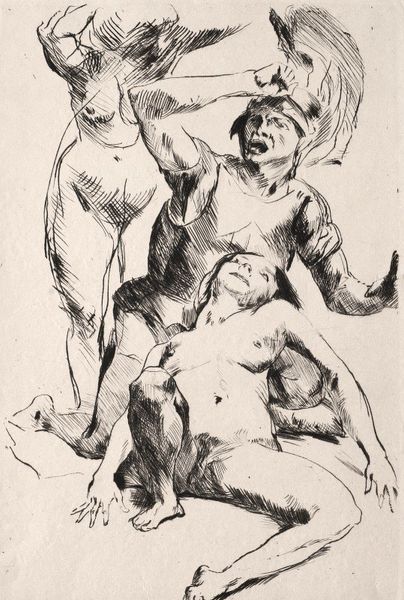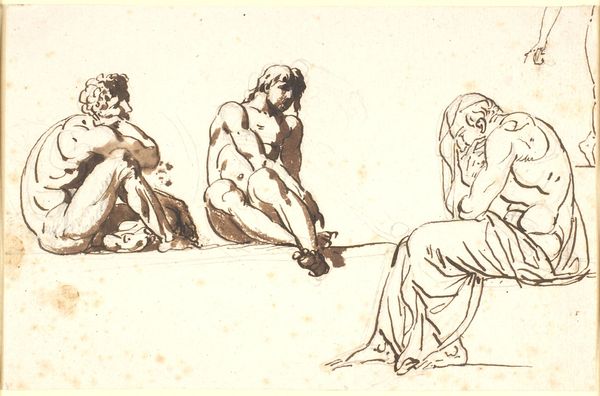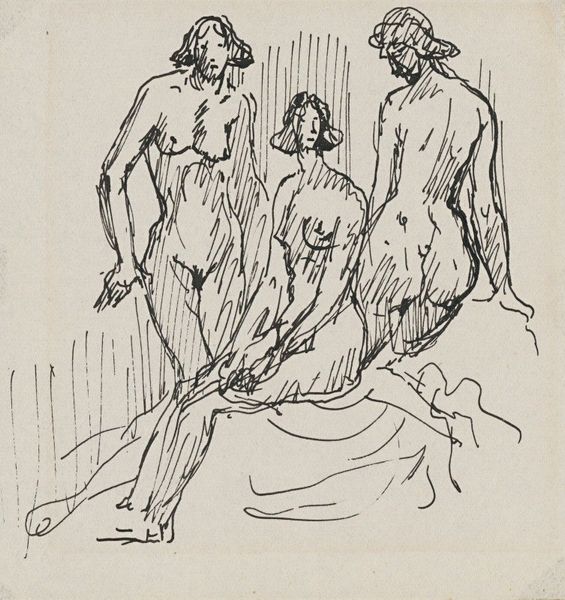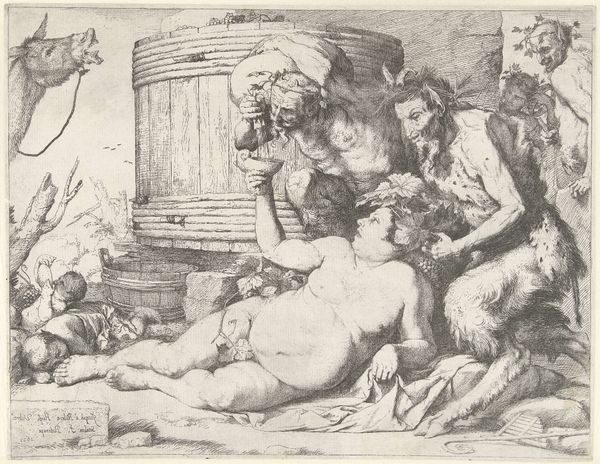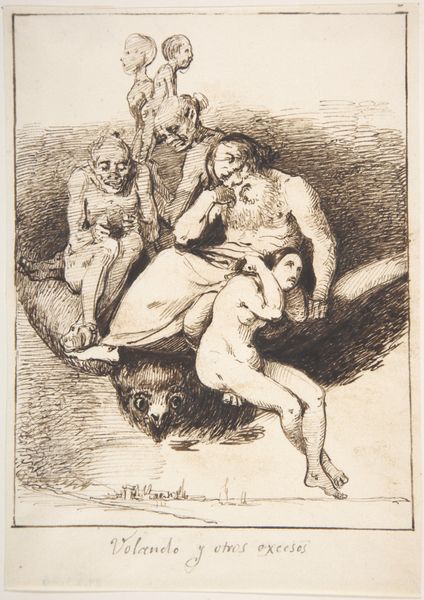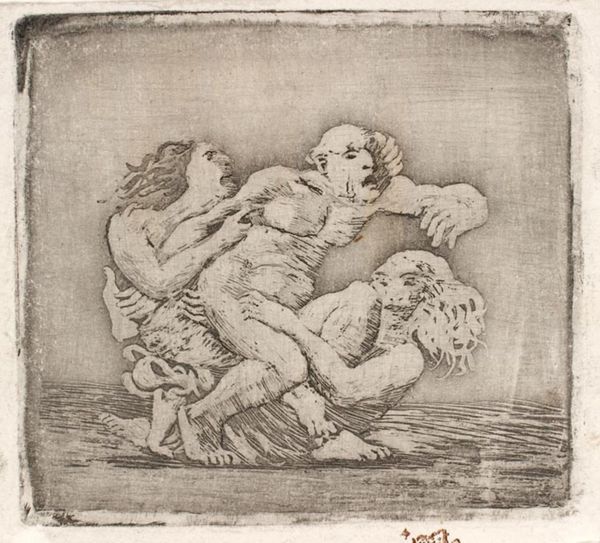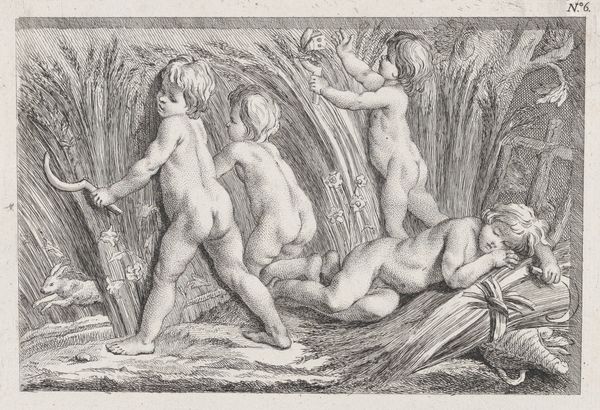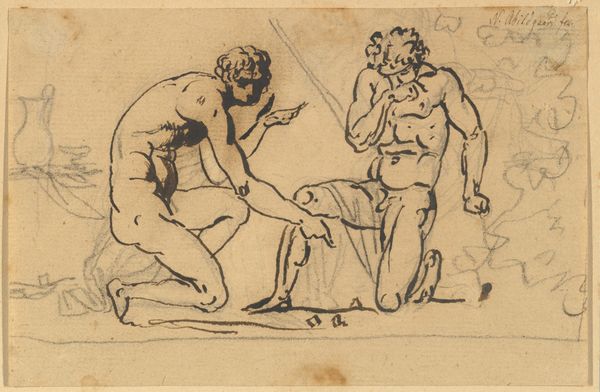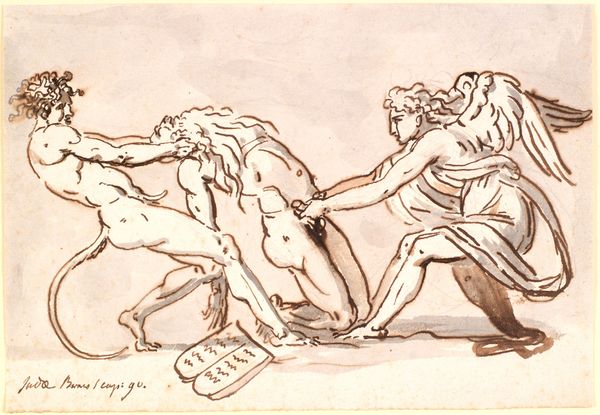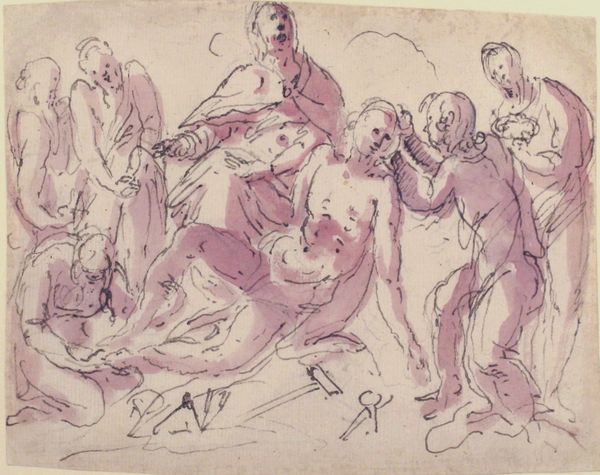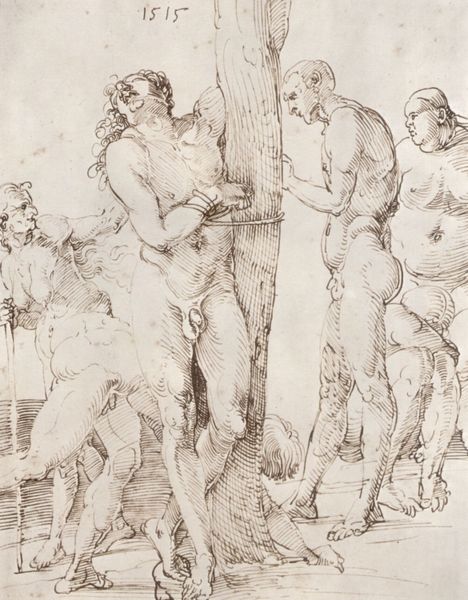
drawing
#
drawing
#
figuration
#
form
#
11_renaissance
#
italian-renaissance
#
male-nude
Copyright: Public domain
Albrecht Durer created this pen and ink drawing, Five Male Nudes, in 1526. At this time in Germany, a renewed interest in classical art and humanist philosophy was spreading northward from Italy. Durer's nudes reflect this, but they don't present idealized beauty as in Italian Renaissance art. Instead, we see bodies caught in moments of anguish, their poses awkward, and their musculature rendered with unflinching realism. What stories do these bodies tell? Are they victims of the plague, a frequent terror in 16th-century Europe? Or are they condemned souls from biblical narratives? Durer was deeply involved in the intellectual debates of the Reformation. As a historian, I might turn to pamphlets and sermons of the period for clues. The meaning of art is not fixed; it emerges from the intersection of the artist's vision, the viewer's interpretation, and the historical context that shapes them both.
Comments
No comments
Be the first to comment and join the conversation on the ultimate creative platform.
